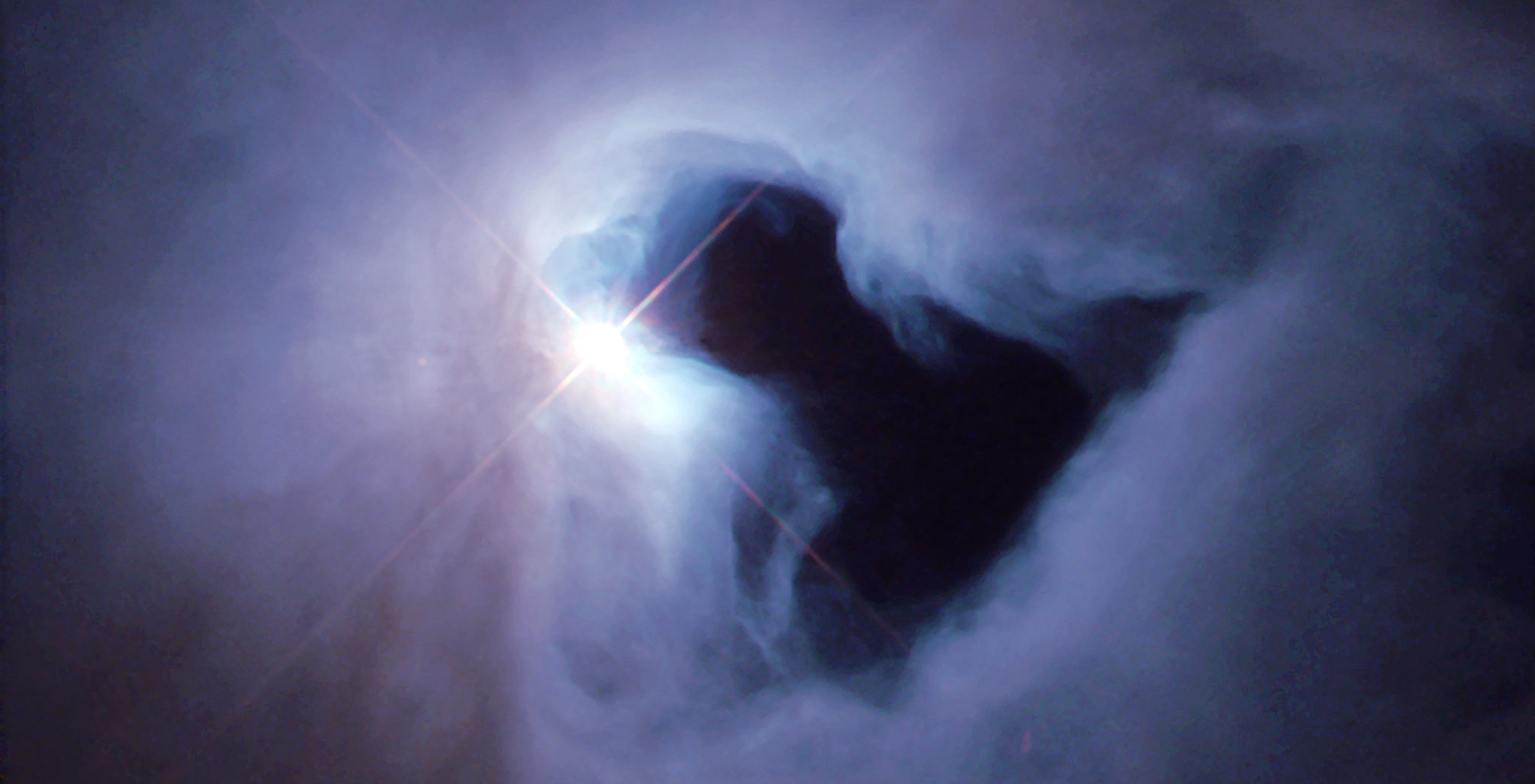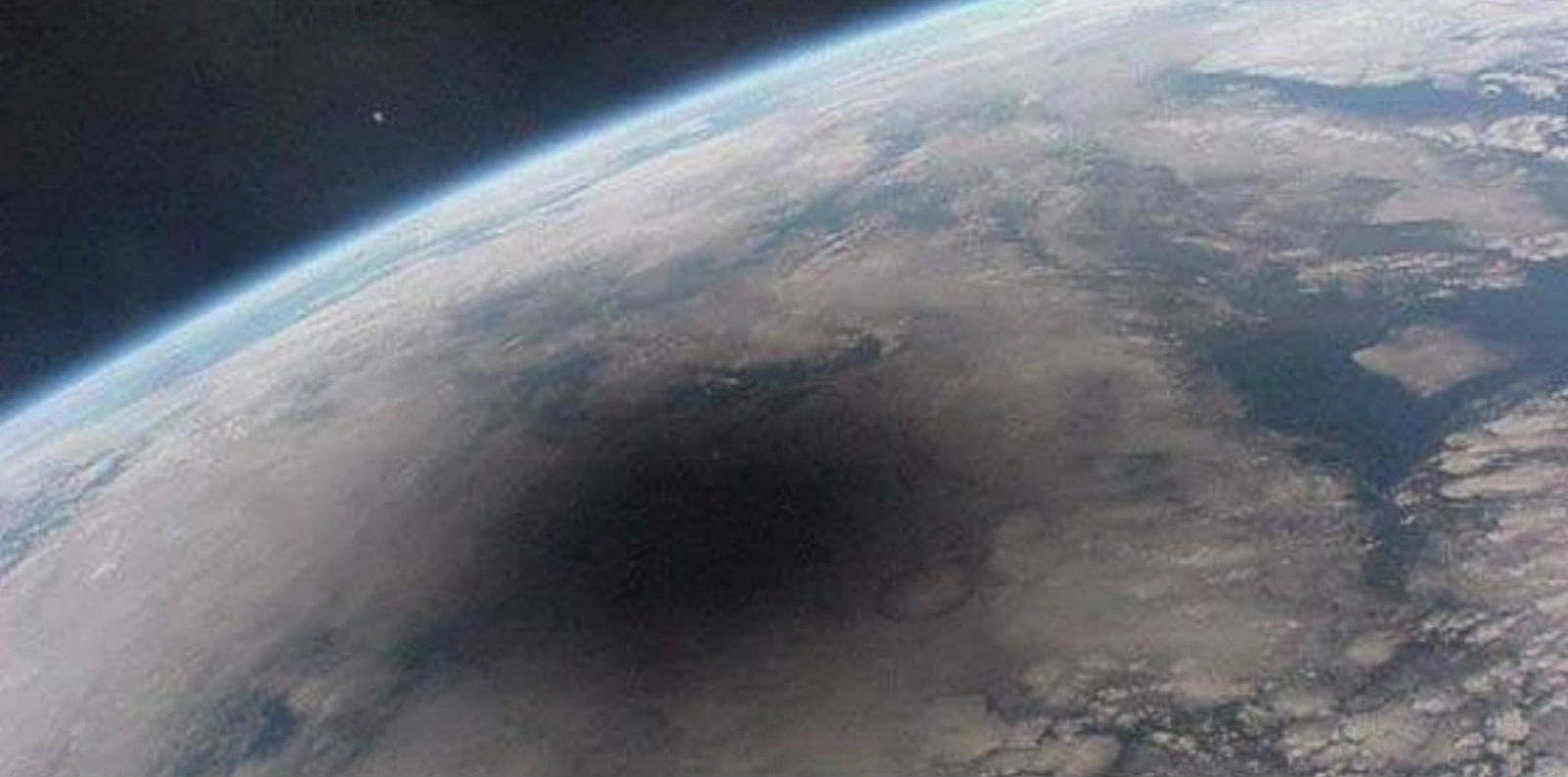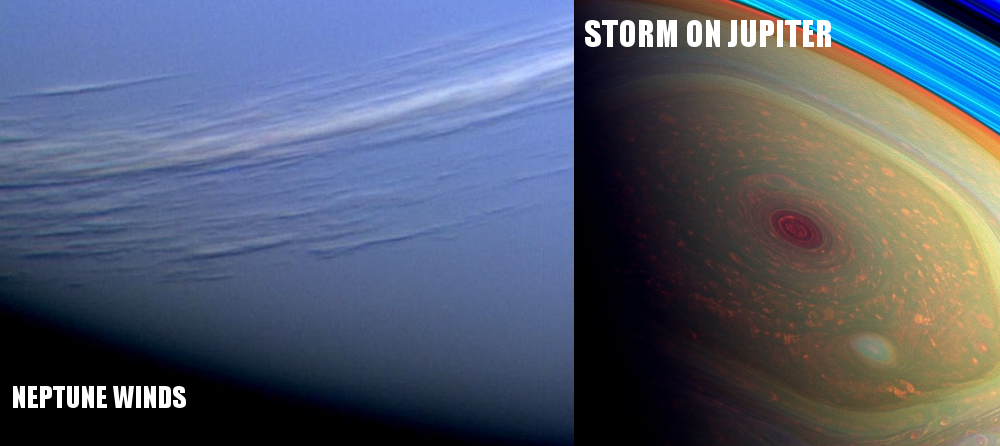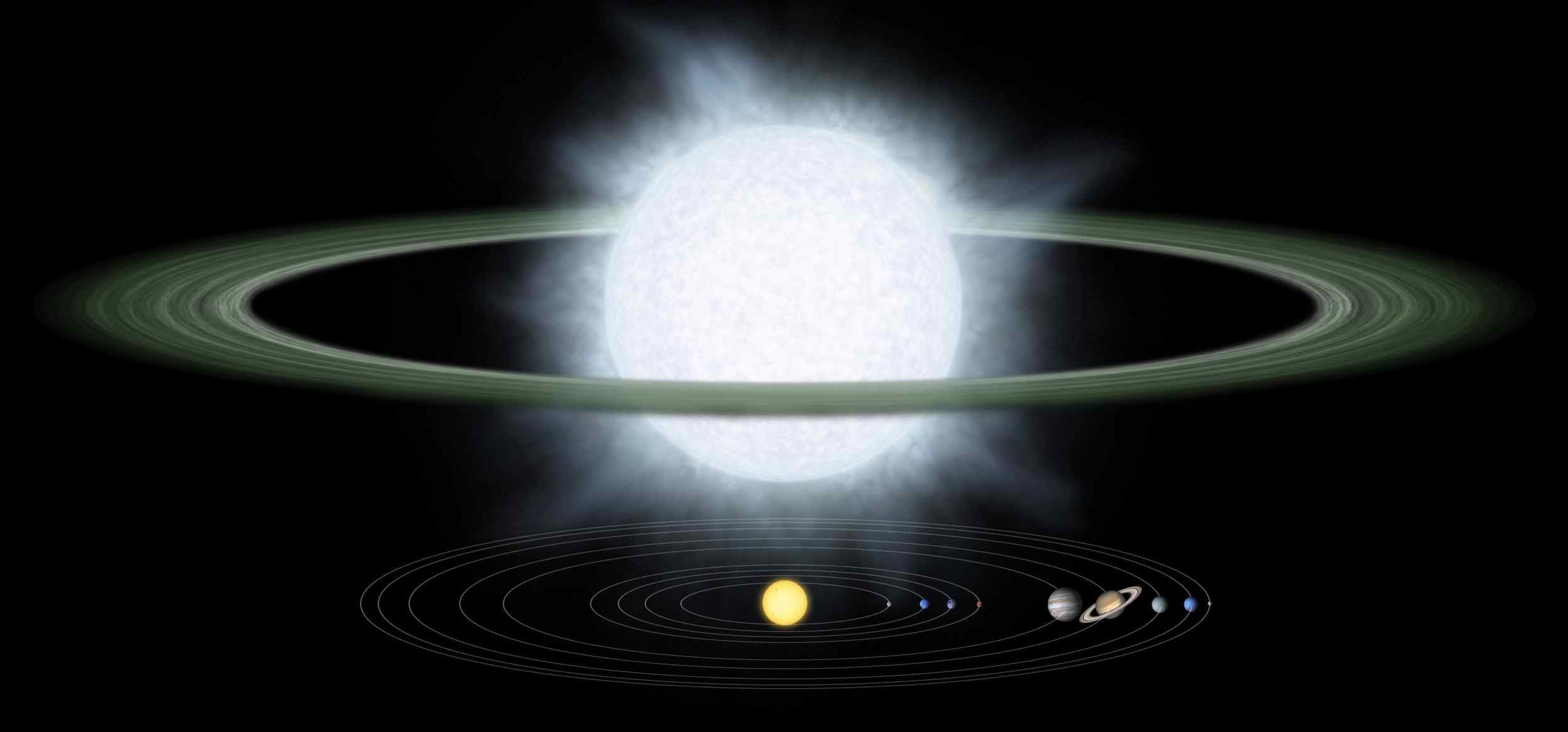 If you like space-related topics, this one is for you! It’s a list of the most visually staggering cosmic curiosities or simply mind-altering facts about outer space. Enjoy and don’t forget to comment!
If you like space-related topics, this one is for you! It’s a list of the most visually staggering cosmic curiosities or simply mind-altering facts about outer space. Enjoy and don’t forget to comment!
1. Stars and lights from our cities create an unforgettable masterpiece on the canvas of the Universe. We are part of the cosmos, so this counts!
 2. At one point the central star in the Butterfly nebula became so incredibly hot it exploded its stellar guts in a fantastic pattern.
2. At one point the central star in the Butterfly nebula became so incredibly hot it exploded its stellar guts in a fantastic pattern.
 3. The legendary Pillars of Creation (Eagle nebula), made famous by the Hubble Space Telescope in 1995, highlighting its finger-like pillars where new stars are thought to be forming.
3. The legendary Pillars of Creation (Eagle nebula), made famous by the Hubble Space Telescope in 1995, highlighting its finger-like pillars where new stars are thought to be forming.
 4. What you’re seeing in this image is a new star being born. Just think about that for a second. A STAR!
4. What you’re seeing in this image is a new star being born. Just think about that for a second. A STAR!
 5. This is what a solar eclipse looks like from space.
5. This is what a solar eclipse looks like from space.
 6. The first man-made object to travel beyond our Solar system was Voyager 1. That little Blue Dot is Earth, as seen from the edge of our Solar system.
6. The first man-made object to travel beyond our Solar system was Voyager 1. That little Blue Dot is Earth, as seen from the edge of our Solar system.
 7. Now to more bizarre space facts: Space stinks!.. Wait, what?
7. Now to more bizarre space facts: Space stinks!.. Wait, what?
Astronauts who came back from their missions in outer space admitted that their astro-suits smelled like BBQed steak and hot metal. Although Space is basically a big pile of literally nothing, where the amount of matter is miserably small, that matter is sprinkled all over the place. Maybe there’s a cluster of particles surrounding Earth, that got fried by cosmic radiation or maybe the entire Universe just needs a shower. Come to think about it the cosmos smelling like steak isn’t such a bad idea (unless you’re a vegetarian).
 8. Can you imagine a force so unimaginably strong that it actually bends light? That cool phenomenon is called “gravitational lensing”. GL is actually the reason we can “see” black holes, since their gravity can and does bend light around it, betraying its presence.
8. Can you imagine a force so unimaginably strong that it actually bends light? That cool phenomenon is called “gravitational lensing”. GL is actually the reason we can “see” black holes, since their gravity can and does bend light around it, betraying its presence.
 9. Whenever you compare the Sun to the Moon, you think “pretty cool that they’re both the same size”. Of course this is not true but due to an uncanny coincidence (is it, though?) the Sun’s diameter is 400 times bigger but the Moon is 400 times closer to Earth!
9. Whenever you compare the Sun to the Moon, you think “pretty cool that they’re both the same size”. Of course this is not true but due to an uncanny coincidence (is it, though?) the Sun’s diameter is 400 times bigger but the Moon is 400 times closer to Earth!
 10. We’ve been looking for water on other planets but instead 2 teams of astronauts found an enormous (by Earth’s standards) quantity of H2O, equivalent to 140 trillion times the water of our oceans, just floating in space around a quasar. How did it get there? Well, water is 2 Hydrogen atoms combined with an Oxygen atom, so this quasar black hole literally makes water out of thin air, as it sucks in the matter and spews out waves of energy, knocking those atoms together and forming water molecules.
10. We’ve been looking for water on other planets but instead 2 teams of astronauts found an enormous (by Earth’s standards) quantity of H2O, equivalent to 140 trillion times the water of our oceans, just floating in space around a quasar. How did it get there? Well, water is 2 Hydrogen atoms combined with an Oxygen atom, so this quasar black hole literally makes water out of thin air, as it sucks in the matter and spews out waves of energy, knocking those atoms together and forming water molecules.
 11. If Hell was a place in the real world, it would be on Venus. Being the second planet from the Sun, you’d imagine Venus would be pretty warm but in facts it’s so scorching hot that it snows metal (metalgalena and bismuthinite) and rains sulfuric acid with temperatures averaging 872 °F (467 °C). The atmosphere on Venus is 96% CO2. Due to immense pressure the carbon dioxide turns into something called “supercritical fluid” – something between gas and liquid, used on Earth as an industrial solvent.
11. If Hell was a place in the real world, it would be on Venus. Being the second planet from the Sun, you’d imagine Venus would be pretty warm but in facts it’s so scorching hot that it snows metal (metalgalena and bismuthinite) and rains sulfuric acid with temperatures averaging 872 °F (467 °C). The atmosphere on Venus is 96% CO2. Due to immense pressure the carbon dioxide turns into something called “supercritical fluid” – something between gas and liquid, used on Earth as an industrial solvent.
 12. NASA scientists have recently discovered a brand new type of star called Y dwarfs. These celestial cuties are all warm and fuzzy. Unlike the rest of the stars that can disintegrate any living thing in a second, Jupiter-sized Y dwarfs are barely hot enough to bake a pie.
12. NASA scientists have recently discovered a brand new type of star called Y dwarfs. These celestial cuties are all warm and fuzzy. Unlike the rest of the stars that can disintegrate any living thing in a second, Jupiter-sized Y dwarfs are barely hot enough to bake a pie.
 13. This one’s pretty gross, so you might want to skip it if you’re icky. Still here? Good.
13. This one’s pretty gross, so you might want to skip it if you’re icky. Still here? Good.
The skin on your feet peels off in zero-gravity a.k.a. outer space. Since the astronauts don’t use their feet for walking, the skin starts getting softer and eventually just flakes off. Astronauts must be very careful when changing their socks and underwear to avoid air contamination. Just think about all that dead skin floating around you!
 14. How’s the weather today, folks? Nasty, huh? People can’t imagine how even the deadliest hurricanes on Earth are but a gentle breeze when compared to what’s going on other planets of our Solar system. Mars and Mercury’s weather, for example, can go from -200 °C to +200 °C in the same day! We’ve discussed Venus already, so you know it’s Hell out there. Winds on Neptune can reach 1600 MPH which is roughly twice as fast as a speeding bullet. Let that sink in. Finally my personal favorite – Jupiter and its never ending hexagonal storm that has been raging on the gas giant’s surface for at least 300 years now.
14. How’s the weather today, folks? Nasty, huh? People can’t imagine how even the deadliest hurricanes on Earth are but a gentle breeze when compared to what’s going on other planets of our Solar system. Mars and Mercury’s weather, for example, can go from -200 °C to +200 °C in the same day! We’ve discussed Venus already, so you know it’s Hell out there. Winds on Neptune can reach 1600 MPH which is roughly twice as fast as a speeding bullet. Let that sink in. Finally my personal favorite – Jupiter and its never ending hexagonal storm that has been raging on the gas giant’s surface for at least 300 years now.
 15. You’re reading this list sitting in your comfy chair, seemingly still, but you’re actually constantly moving. Our planet spins around its axis while orbiting around the Sun at incredible speed but our Solar system also travels around the center of our galaxy at mind-boggling speed of 100,000,000 km per hour! Just think about it, 1 hour from now you will be 100 Million km away from where you currently are. Space is so trippy.
15. You’re reading this list sitting in your comfy chair, seemingly still, but you’re actually constantly moving. Our planet spins around its axis while orbiting around the Sun at incredible speed but our Solar system also travels around the center of our galaxy at mind-boggling speed of 100,000,000 km per hour! Just think about it, 1 hour from now you will be 100 Million km away from where you currently are. Space is so trippy.
BTW, 1 full revolution of our Sun around the Milky Way takes about 200 million years!
 16. Our Sun is pretty huge compared to Earth but THIS hyper giant from the constellation of Cygnus, the Swan, is 1,000,000 bigger, which makes our star look like a speck of dust in a desert. It’s currently the biggest star we’ve discovered.
16. Our Sun is pretty huge compared to Earth but THIS hyper giant from the constellation of Cygnus, the Swan, is 1,000,000 bigger, which makes our star look like a speck of dust in a desert. It’s currently the biggest star we’ve discovered.
 17. Binary star systems are very rare and extremely beautiful. Two stars bound together with the sheer force of gravity, spending billions of years performing a seemingly infinite cosmic dance.
17. Binary star systems are very rare and extremely beautiful. Two stars bound together with the sheer force of gravity, spending billions of years performing a seemingly infinite cosmic dance.
 18. We don’t think much about the Moon but it is currently the only celestial body that the humans have ever set foot on and, thanks to the absence of an atmosphere, the footprints of those legendary Apollo astronauts are still imprinted on its surface even after 46 years.
18. We don’t think much about the Moon but it is currently the only celestial body that the humans have ever set foot on and, thanks to the absence of an atmosphere, the footprints of those legendary Apollo astronauts are still imprinted on its surface even after 46 years.
 19. Okay, here’s a simple question: why is leap year an important thing? Most of the people wouldn’t know the answer so, hopefully, you’re about to learn some stuff! The Earth takes 365.24219 days to orbit the Sun (that’s a Solar Year). Our calendars usually have 365 days in them, so what happens to that extra 0.24219 days? Multiply that by 4 (years) and you’ll get yourself February 29th every four years!
19. Okay, here’s a simple question: why is leap year an important thing? Most of the people wouldn’t know the answer so, hopefully, you’re about to learn some stuff! The Earth takes 365.24219 days to orbit the Sun (that’s a Solar Year). Our calendars usually have 365 days in them, so what happens to that extra 0.24219 days? Multiply that by 4 (years) and you’ll get yourself February 29th every four years!
 And as final touch, I’d like to quote Carl Sagan, which is the most important point, in my opinion:“The Cosmos is all that is or ever was or ever will be. Our feeblest contemplations of the Cosmos stir us — there is a tingling in the spine, a catch in the voice, a faint sensation as if a distant memory, of falling from a height. We know we are approaching the greatest of mysteries.”
And as final touch, I’d like to quote Carl Sagan, which is the most important point, in my opinion:“The Cosmos is all that is or ever was or ever will be. Our feeblest contemplations of the Cosmos stir us — there is a tingling in the spine, a catch in the voice, a faint sensation as if a distant memory, of falling from a height. We know we are approaching the greatest of mysteries.”
With each generation we are indeed reaching out farther and farther into space and maybe in the nearest future you will be the one to discover something groundbreaking, something previously unthinkable! Since we can’t go back, all we can do is head towards the stars and hope the Cosmos will accept us. Excelsior!
